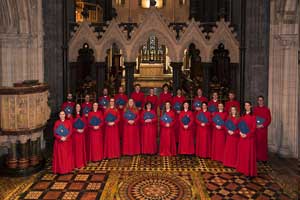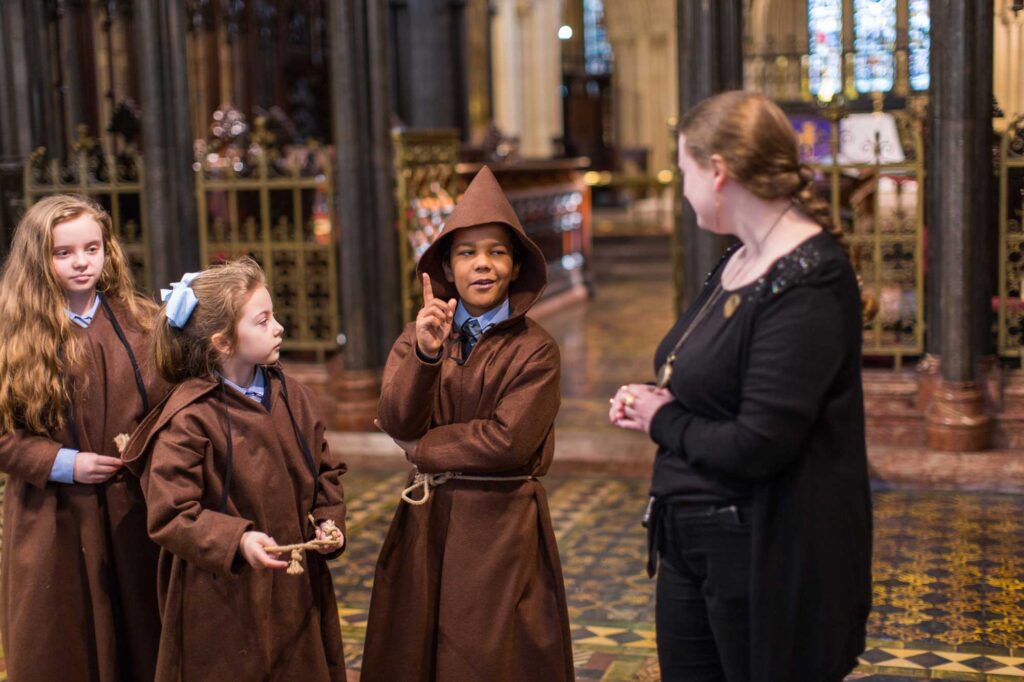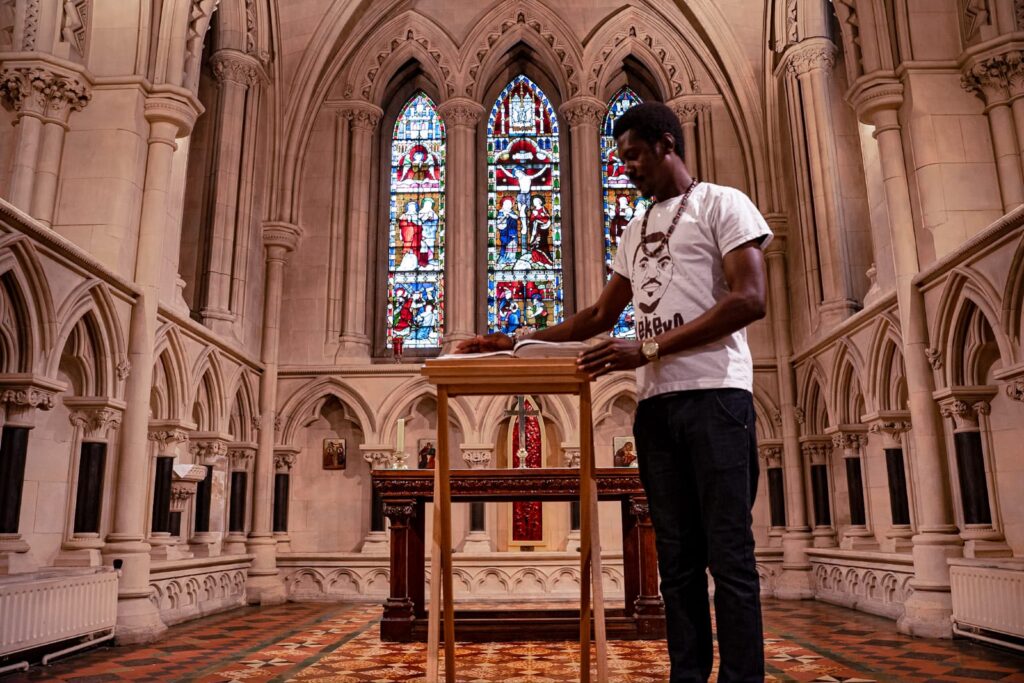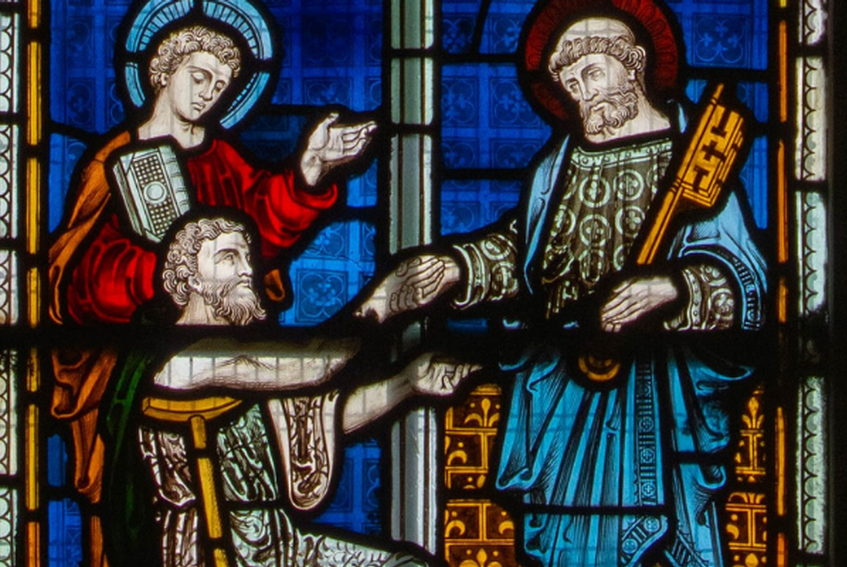Welcome!
The Revd Abigail Sines, Dean’s Vicar, Christ Church Cathedral
In these strange and challenging times in which we live, where ever you are sharing in this ‘virtual exhibition’ I want to wish you a warm welcome! When I began talking with Laragh Pittman, the exhibition curator, a few months ago about the possibility of holding an art exhibition in the cathedral for Refugee Week it was an entirely different proposal from what has now emerged! Nevertheless, we have taken the constraints of the coronavirus pandemic and the restriction on gatherings of people in our stride to bring together this virtual exhibition, a video compilation of artworks projected in the cathedral space, with audio contributions from the various artists as well as spoken word poetry by four women who have come through the asylum process in Ireland.
For the past three years we in the cathedral have been trying to educate ourselves about the issue of direct provision in Ireland, and to participate in the public conversation around this issue. Through this process we have tried to listen to and learn from those who have themselves been through this system. We have formed a friendship with Ellie Kisyombe of Our Table, which we have valued greatly, and we have tried to give asylum seekers the chance to speak for themselves through our ‘What’s the Story?’ series. We have tried to mark Refugee Week in an intentional way over the last two years and we envisioned this year’s art exhibition would be a natural extension of that. Though the circumstances have meant that our ‘Imagine’ exhibition itself had to be re-imagined, we are delighted to be able to present this work. In recent weeks, we have come to recognize an even more urgent need in our society for courage, creativity, openness and honesty as we pay heed to voices speaking out against systemic racism so entrenched in many places around the world.
I want to express huge thanks to Laragh Pittman, herself a visual artist and major force behind the Art Nomads group, who has curated this exhibition and done a tremendous amount of work to organise and draw all the threads together. I would also like to thank Rajinder Singh for volunteering his expertise to edit and produce the final videos. Thanks also to Antonio D’Souza and Muhammad Achour for their major contributions in shaping the virtual exhibition experience.
A word from the curator
Laragh Pittman, ‘Imagine’ curator and co-founder of Art Nomads
When I was first approached by the Revd Abigail Sines about the possibility of curating an exhibition in Christ Church Cathedral I did feel a little reluctant. The staging of an exhibition in a complex and ornate space such as a church can render the artworks invisible, and I also have a particular dislike for hessian display screens. However on my first visit to the space with its vast nave and beautifully tiled floors, I realised that we could take a much more audacious approach. I also came to discover that Abigail herself has a natural creative sensibility and was very open to new ideas.
Once the devastation of Covid-19 started to be part of our everyday reality and the restrictions of lockdown started to hit, it took us all a lot of energy to think and see a way forward. The process has been very interesting; how to communicate, how to overcome the restrictions of distance, how to transport artwork, how to share the voice of the artist?
One key breakthrough was the idea of using light projections in the dark architectural space of the Cathedral and then to film a journey of exploration. Myself, Abigail and a few artists from Art Nomads live within the 5km area so once we were able to travel this distance we arranged to start work. The large interior space also enabled us to keep safe physical distance from each other. Once we were able to start experimenting we discovered that the most interesting thing was to embrace the difficult and diverse nature of the material of the church and to not even try to create flat white surfaces. It was through this play with light falling around carved pillars, across fabric, fitting into wall niches and against the rough stone walls of the crypt that we found a new way to display the art.
The other key element in this work and in the videos we have developed is the use of audio. Instead of reading the artist’s printed statements you get to hear the tone, accent and emotion of their individual voices. They are joined by four powerful spoken word pieces by activists who were invited to say something in their own words about Imagine the theme of World Refugee Week. It is particularly important for us if we are to be anti-racist in Ireland to bring to a public audience the real experience of refugees and migrants here and to give them the ownership of their creativity.









